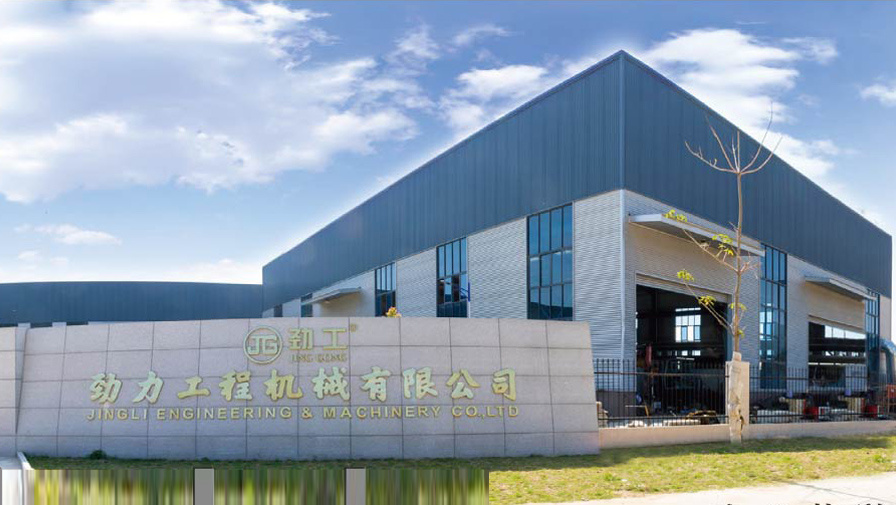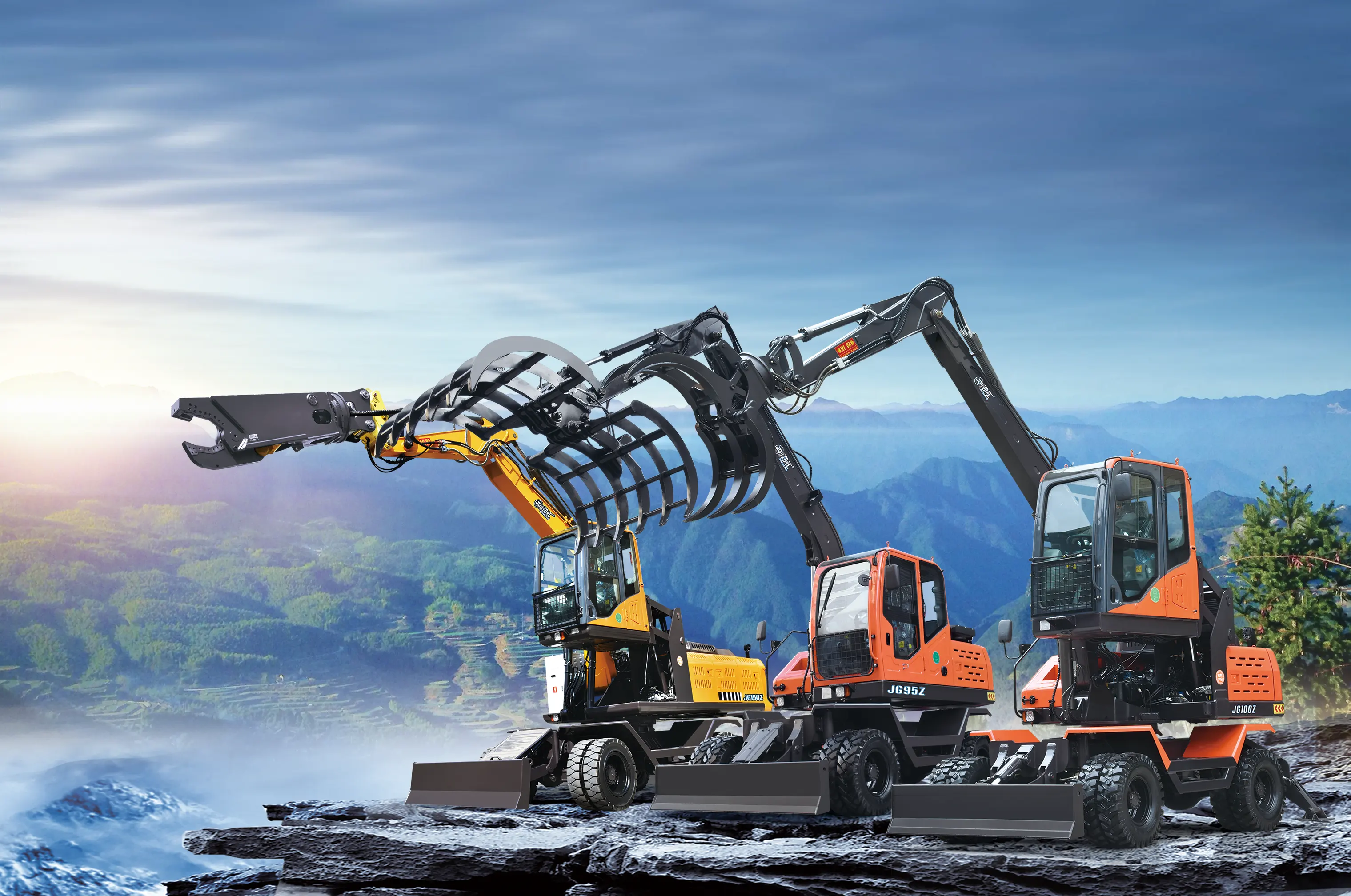
Online Inquiry
Understanding the Different Types of Hydraulic Crawler Excavators Offered by Suppliers
TIME:2025-05-01 10:00
Understanding the Different Types of Hydraulic Crawler Excavators Offered by Suppliers
Table of Contents
- Introduction to Hydraulic Crawler Excavators
- What is a Hydraulic Crawler Excavator?
- Key Components of Hydraulic Crawler Excavators
- Different Types of Hydraulic Crawler Excavators
- 1. Mini Excavators
- 2. Standard Excavators
- 3. Large Excavators
- 4. Zero Tail Swing Excavators
- 5. Long Reach Excavators
- Applications of Hydraulic Crawler Excavators
- How to Choose the Right Hydraulic Crawler Excavator
- Popular Suppliers of Hydraulic Crawler Excavators
- Maintenance Tips for Hydraulic Crawler Excavators
- Frequently Asked Questions (FAQs)
- Conclusion
Introduction to Hydraulic Crawler Excavators
In the construction and mining industry, **hydraulic crawler excavators** play a pivotal role. These powerful machines are designed to perform a variety of tasks, from digging and lifting to grading and demolition. As construction projects become increasingly complex, understanding the different types of hydraulic crawler excavators is essential for professionals in the field. This guide aims to provide an in-depth look at the types of hydraulic crawler excavators offered by suppliers and their applications in various industries.
What is a Hydraulic Crawler Excavator?
A **hydraulic crawler excavator** is a heavy-duty construction machine equipped with a boom, stick, and bucket that utilizes hydraulic power to perform earth-moving tasks. Unlike wheeled excavators, crawler excavators are mounted on tracked undercarriages, providing stability and traction on uneven terrain. This makes them ideal for construction sites, forestry, and mining operations.
The hydraulic system allows for precise control of the excavator's movements, enabling operators to execute complex tasks efficiently. Crawler excavators are available in various sizes, making them suitable for tasks ranging from small landscaping projects to large-scale construction and excavation jobs.
Key Components of Hydraulic Crawler Excavators
Understanding the key components of hydraulic crawler excavators is crucial for effective operation and maintenance. The primary components include:
1. Boom
The boom is the long arm of the excavator that provides the reach and height necessary for various digging and lifting tasks. It can be adjusted to different angles, allowing for versatile operation.
2. Stick
The stick connects the boom to the bucket and can extend or retract to reach different depths. This component is essential for digging operations.
3. Bucket
The bucket is attached at the end of the stick and is the primary tool for scooping, lifting, and moving materials. Different bucket attachments are available for different tasks.
4. Undercarriage
The undercarriage consists of tracks and rollers, providing stability and mobility. The crawler design allows the excavator to navigate challenging terrains, making it suitable for construction sites.
Different Types of Hydraulic Crawler Excavators
Hydraulic crawler excavators come in various types, each tailored for specific applications and environments. Here’s a detailed look at the most common types available in the market:
1. Mini Excavators
**Mini excavators**, also known as compact excavators, are smaller machines designed for tight spaces and smaller projects. They typically weigh between 1 to 6 tons and are ideal for landscaping, small construction jobs, and utility work. Their compact size allows them to maneuver easily in confined areas where larger excavators cannot operate efficiently.
2. Standard Excavators
**Standard excavators** are more powerful than mini excavators and are available in various sizes, ranging from 6 to 50 tons. They are versatile machines used in a wide array of applications, including site preparation, trenching, and material handling. Standard excavators feature robust hydraulic systems that provide excellent digging force and lifting capabilities.
3. Large Excavators
**Large excavators** are heavy-duty machines designed for large-scale construction and mining operations. Weighing over 50 tons, these excavators are equipped with advanced hydraulic systems for maximum power and efficiency. They are commonly used in major construction projects, demolition, and quarrying.
4. Zero Tail Swing Excavators
**Zero tail swing excavators** are designed to operate in confined spaces without the risk of the rear of the machine swinging into obstacles. This feature makes them ideal for urban construction sites and projects where space is limited. They combine the benefits of a compact design with the power of larger excavators.
5. Long Reach Excavators
**Long reach excavators** are specialized machines designed for projects that require extended reach and depth. They feature elongated booms and sticks, allowing operators to work further from the machine’s base. These excavators are commonly used in dredging, river and lake maintenance, and high-reach demolition.
Applications of Hydraulic Crawler Excavators
Hydraulic crawler excavators are versatile machines with applications across diverse industries. Some common applications include:
1. Construction
In the construction industry, hydraulic crawler excavators are essential for site preparation, grading, and excavation. They are used to dig foundations, create trenches, and move heavy materials.
2. Demolition
Excavators equipped with specialized attachments can efficiently demolish buildings and structures. Their precision allows operators to target specific areas, minimizing collateral damage.
3. Mining
In mining operations, large excavators are utilized for extracting minerals and moving bulk materials. Their powerful hydraulic systems enable them to perform heavy lifting and digging tasks in challenging environments.
4. Landscaping
Mini excavators are widely used in landscaping projects for tasks such as digging ponds, planting trees, and grading lawns. Their compact size allows them to navigate tight spaces easily.
5. Utility Work
Hydraulic crawler excavators are often employed in utility work, such as installing underground utilities and pipelines. Their digging capabilities make them ideal for trenching operations.
How to Choose the Right Hydraulic Crawler Excavator
Selecting the right hydraulic crawler excavator involves several factors:
1. Project Requirements
Assess the specific needs of your project, including the type of work, depth of excavation, and site conditions.
2. Size and Weight
Consider the size and weight of the excavator based on the available space and the load it will handle. Mini excavators are suitable for smaller jobs, while large excavators are ideal for major projects.
3. Attachments
Determine the necessary attachments for your excavator. Different tasks may require specialized buckets, grapples, or hydraulic hammers.
4. Supplier Reputation
Research suppliers to ensure you are purchasing from a reputable dealer. Check customer reviews and ask for recommendations from industry professionals.
5. Budget
Establish a budget that includes not only the purchase price but also maintenance and operating costs. Consider both new and used options to find the best value.
Popular Suppliers of Hydraulic Crawler Excavators
Several manufacturers are known for their high-quality hydraulic crawler excavators. Here are some reputable suppliers:
1. Caterpillar
Caterpillar is a leading manufacturer of heavy machinery, including a wide range of hydraulic excavators. They are known for their durability and innovative technology.
2. Komatsu
Komatsu offers a variety of hydraulic crawler excavators suitable for various applications. Their machines are recognized for their fuel efficiency and advanced features.
3. Hitachi
Hitachi provides a range of hydraulic excavators designed for reliability and performance. They are popular in both construction and mining industries.
4. Volvo
Volvo is known for its commitment to sustainability and innovation in hydraulic machinery. Their excavators are designed for efficiency and ease of operation.
5. Doosan
Doosan manufactures a range of hydraulic crawler excavators known for their powerful performance and advanced hydraulic systems. They offer various models to meet different project needs.
Maintenance Tips for Hydraulic Crawler Excavators
Proper maintenance is essential for ensuring the longevity and performance of hydraulic crawler excavators. Here are some key maintenance tips:
1. Regular Inspections
Conduct regular inspections of hydraulic systems, tracks, and attachments to identify and address any issues promptly.
2. Fluid Checks
Monitor hydraulic fluid levels and quality. Change fluids according to the manufacturer's recommendations to ensure optimal performance.
3. Track Maintenance
Keep tracks clean and well-lubricated to prevent wear and tear. Regularly check for proper tension and alignment.
4. Component Cleaning
Clean the excavator's components, including the bucket and undercarriage, to prevent buildup that can affect performance.
5. Professional Servicing
Schedule periodic servicing with a qualified technician to address any complex maintenance needs and ensure the machine operates efficiently.
Frequently Asked Questions (FAQs)
1. What is the difference between a mini excavator and a standard excavator?
Mini excavators are smaller and more suitable for tight spaces, while standard excavators offer more power and versatility for larger projects.
2. How deep can a hydraulic crawler excavator dig?
The digging depth varies by model, but many hydraulic crawler excavators can reach depths of 10 to 20 feet or more, depending on the size and configuration of the machine.
3. Are hydraulic crawler excavators easy to operate?
With proper training, hydraulic crawler excavators are relatively easy to operate. They often feature user-friendly controls and advanced technology to assist operators.
4. How do I choose the right excavator for my project?
Consider project requirements, size and weight of the excavator, necessary attachments, supplier reputation, and budget when selecting the right excavator.
5. What maintenance is required for hydraulic crawler excavators?
Regular inspections, fluid checks, track maintenance, component cleaning, and professional servicing are essential for maintaining hydraulic crawler excavators.
Conclusion
Understanding the different types of hydraulic crawler excavators offered by suppliers is vital for making informed decisions in construction and mining industries. By recognizing the unique features and applications of each type, professionals can choose the right excavator for their specific needs. With proper maintenance and care, hydraulic crawler excavators can deliver exceptional performance and efficiency, contributing significantly to the success of any project. Whether you're involved in small landscaping jobs or large-scale excavation projects, the right excavator can make all the difference in achieving your goals.










